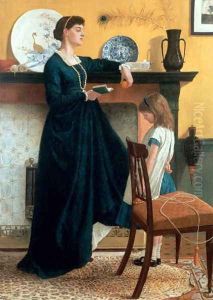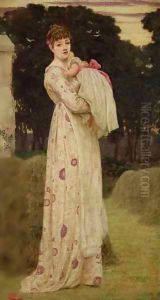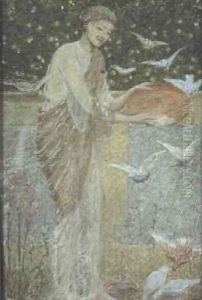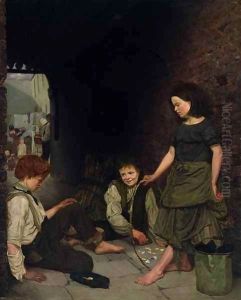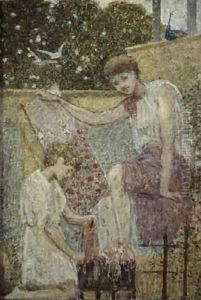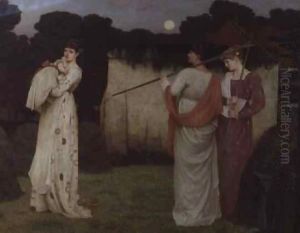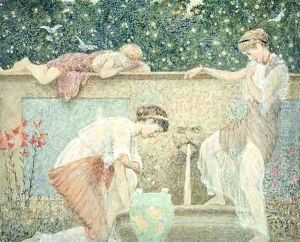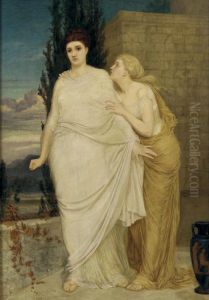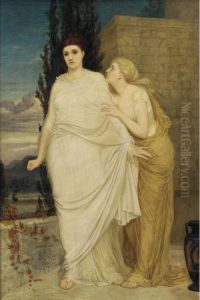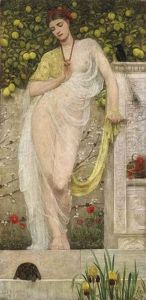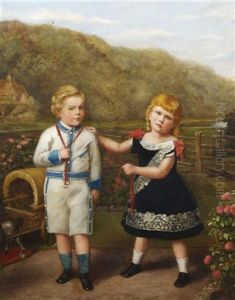Thomas Armstrong Paintings
Thomas Armstrong was a notable figure in the 19th-century British art scene, serving as both an artist and an arts administrator. Born on October 19, 1832, in Fallowfield, Manchester, Armstrong initially pursued a career in law before fully dedicating himself to the arts. He studied art in Paris and Rome, which was typical for many artists of the period, who sought to hone their craft by engaging with the rich European artistic traditions.
Armstrong's artistic style was influenced by the Pre-Raphaelite movement, which emphasized a return to the detail, color, and complexity of early Renaissance art. However, he was not a core member of the Brotherhood, which included artists such as Dante Gabriel Rossetti, John Everett Millais, and William Holman Hunt. Armstrong's oeuvre was relatively modest, and his impact on the art world was less through his paintings and more through his role as an art administrator.
In 1873, Armstrong was appointed as the Director for Art at the South Kensington Museum, which later became the Victoria and Albert Museum. His tenure at the museum lasted until 1898, and during this time, he was instrumental in developing the museum's educational programs and expanding its collections. He was also involved in the organization of the Arts and Crafts Exhibition Society, which was established in 1887. Through these roles, Armstrong played a significant role in shaping British public art education and policy at the end of the 19th century.
After his retirement from the South Kensington Museum, Armstrong continued to be active in the art world. He died on July 24, 1911, leaving behind a legacy as a key figure in the British arts establishment, although his work as a painter has not garnered as much historical attention as his contributions to art administration.
